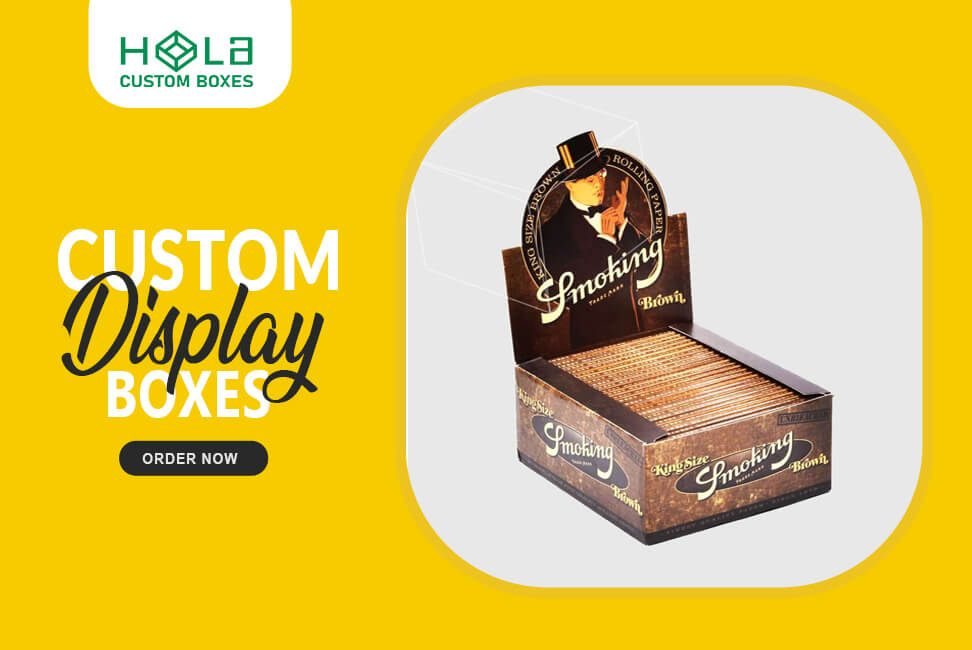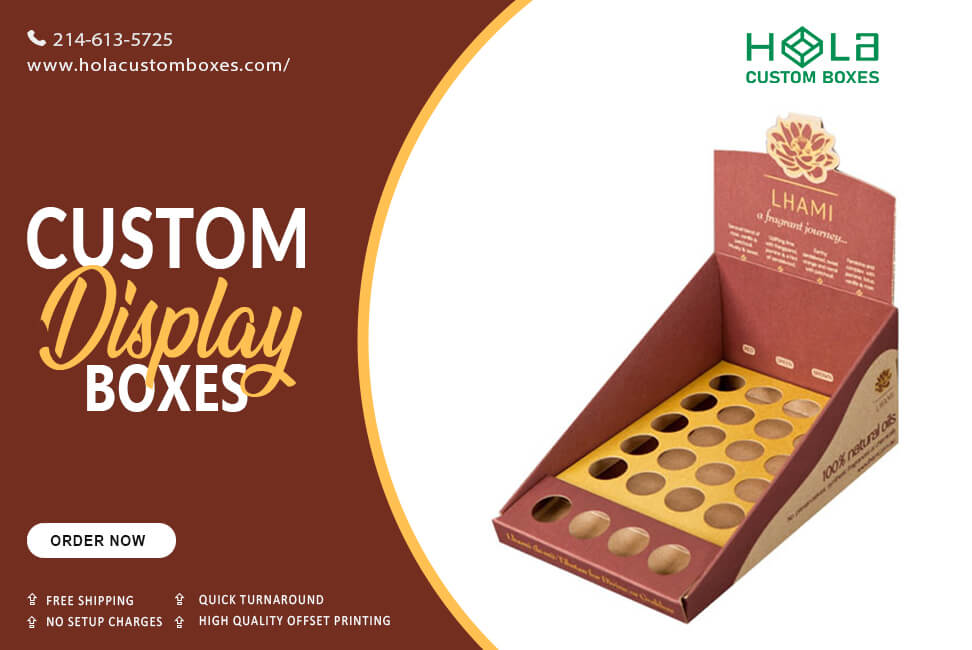How To Choose The Best Display Boxes For Retail Success
2025-12-08 19:56:55.jpg)
Have you ever walked into a store and been immediately drawn to a product by its eye-catching display? How a product is presented can make all the difference in whether or not it sells. That's why selecting the best display box for your retail business is crucial.
From acrylic to metal, cardboard to wood, there are various options for choosing the correct display box for your product. In this article, we'll guide you through understanding your product and customer, and help you select the best display box for maximum impact.
First things first, understanding your product and customer is key. What kind of product are you selling? Is it fragile or heavy? How do customers interact with it? Knowing these details will help determine the display box that best showcases your merchandise.
Equally important is knowing your target audience - their preferences, shopping habits, and age can influence which type of display box they find most appealing. By considering these factors, you'll be able to choose a display box that highlights your product and resonates with potential buyers.
Key Takeaways
- Understanding the product, including physical attributes, packaging requirements, price point, target market, and unique selling points, is crucial when selecting a display box.
- Understanding the customer is also essential when selecting a display box, including demographics, preferences, and lifestyle choices.
- There are various display boxes, such as plastic, glass, acrylic, cardboard, metal, and wood, each with unique advantages and disadvantages.
- Customization options, such as size and shape, branding, material, and functionality, can elevate product appeal and increase brand recognition and recall.
Understanding Your Product and Your Customer
Before selecting the right display boxes, it’s crucial to understand both your product and your target audience. This means analyzing your product’s physical size, shape, fragility, packaging requirements, and pricing and market positioning. A deep dive into what makes your product unique helps you choose display solutions that not only protect and present it but also highlight its best features.
Tailoring Packaging to Connect Emotionally

Packaging isn’t just functional—it’s emotional. Once you know your product and customer well, create packaging that connects on a personal level. Consider colors, typography, and imagery that reflect your brand's personality and match the emotional tone that appeals to your audience. This emotional resonance encourages impulse purchases and builds lasting brand loyalty.
Types of Display Boxes: Pros and Cons
When deciding which display box to use, it's essential to consider the advantages and disadvantages of each type.
Two popular types of display boxes are plastic and glass.
Plastic display boxes offer greater durability, as they are less likely to break or crack than glass display boxes. They're also lighter, making them easier to transport and handle.
On the other hand, glass display boxes offer a more aesthetically pleasing look for your products. They provide a clear view of your merchandise and can make any product appear more high-end or valuable. However, they require more delicate handling and can be more expensive than plastic alternatives due to their fragility.
Ultimately, the decision between durability vs. aesthetics of display boxes depends on your specific needs and goals for showcasing your products in a retail setting.
Acrylic Display Boxes
Acrylic display boxes are popular for showcasing small items such as jewelry or collectibles due to their clear and sleek appearance. They offer high transparency, allowing customers to see the product from all angles. Additionally, they are lightweight and easy to move around, making them ideal for retail settings where displays need to be frequently changed.
When choosing acrylic display boxes, it's essential to consider factors like durability vs. aesthetics and cost vs. quality. While acrylic is known for its durability and resistance to breakage, it can scratch easily if not handled properly. High-quality acrylic may cost more upfront but will last longer and maintain its clarity over time.
Finding the right balance between these factors will help ensure your display boxes enhance your products' appeal while standing up to the wear and tear of a busy retail environment.
Cardboard Display Boxes
If you're looking for an affordable, lightweight option for showcasing your products, cardboard display boxes may be a good choice. Not only are they budget-friendly, but they're also eco-friendly options that can be recycled after use.
Despite their affordability, cardboard display boxes offer durability and strength to protect your merchandise. Cardboard display boxes come in various sizes and shapes, making them versatile for food items, cosmetics, toys, and more. They're also customizable with prints and designs that can help attract customers' attention to your brand.
These boxes are easy to assemble and transport from one location to another, without taking up too much space or adding unnecessary weight. Cardboard display boxes are worth considering if you want a practical yet effective way of displaying your goods while keeping costs down and being environmentally conscious.
Metal Display Boxes

Metal display boxes offer a sleek, modern alternative to traditional cardboard options, providing businesses with a durable, eye-catching way to showcase their products. When choosing metal display boxes for your retail space, keep a few design trends and durability considerations in mind.
First, consider your brand's overall aesthetic. Metal display boxes come in various shapes, sizes, and finishes that can complement or contrast with your branding. For example, brushed aluminum may convey a high-end feel, while powder-coated steel can add color to your displays.
Additionally, think about the placement of your displays - will they be used on countertops or hung on walls? This will determine the orientation and size needs of your metal display box.
Secondly, durability is key in retail environments. Metal display boxes are typically more robust than their cardboard counterparts but require careful consideration. Look for welded seams instead of adhesive bonding for increased strength and longevity. Consider potential impacts and wear-and-tear from frequent customer use and exposure to elements such as sunlight or moisture.
By keeping these factors in mind when selecting metal display boxes for your retail space, you can ensure an attractive product showcase that holds up over time with minimal maintenance.
Wooden Display Boxes
Wooden display boxes can be an excellent choice for creating a warm, rustic feel for your product displays. These boxes offer a natural and organic look that can enhance the appeal of your products.
Wooden display boxes are available in various woods, including pine, oak, cherry, and more. You can choose the type of wood based on the color scheme and style that suits your brand. They're also eco-friendly options for retail success, made from sustainable materials that don't harm the environment during production or disposal.
In addition to being environmentally conscious, these boxes offer durability and longevity. They can withstand wear and tear from regular use without losing their aesthetic appeal. When choosing wooden display boxes for your retail store, consider size, shape, design, and finish to ensure they complement your products' unique features while helping them stand out on shelves or countertops.
Customizing Your Display Boxes for Maximum Impact
Just like a tailored suit can enhance your appearance, customizing your display boxes can elevate the appeal of your products and make them stand out in a crowded market. Here are some customization options and design considerations to help you create the perfect display box for your retail success:
Size and Shape: Consider the size and shape of your product when choosing the size and shape of your display box. A well-fitted custom box will protect your product and showcase it attractively.
Branding: Incorporate branding elements such as logos, colors, and slogans into the design of your display box to increase brand recognition and recall.
Material: Choose materials that align with your brand image while being durable enough to withstand transportation and handling.
Functionality: Consider how customers interact with the display box when designing it. Easy-to-open features or compartments for additional information can enhance customer experience and increase sales potential.
By considering these customization options and design considerations, you can create a unique display box that showcases your products and enhances their appeal in a competitive retail environment.
Frequently Asked Questions
How can I determine the size of the display box I need for my product?
To determine the size of your display box, measure your product accurately. Look for cost-effective options that fit both your product and budget. Don't overspend on a box that's too big or undersell on one that's too small.
Can I combine different display box types to showcase my products?
Mixing styles and materials for variety can uniquely showcase your products. Customizing configurations and layouts for impact will draw attention to your brand. But how does this fit into choosing the best display boxes for retail success?
What is the average lifespan of a display box, and how often should I replace them?
The average lifespan of display boxes can vary depending on usage, material quality, and storage conditions. To ensure cost-effectiveness, replace them when they show signs of wear or damage that could affect product presentation.
How do I maintain and clean my display boxes to keep them looking new?
To keep your display boxes looking new, use preventative maintenance by regularly wiping them down with a dry cloth and avoiding harsh chemicals. Try gentle cleaning techniques like soap, water, or vinegar solution for tougher stains.
Are there any eco-friendly options for display boxes?
Looking for eco-friendly display boxes? Look no further than sustainable packaging made from recycled cardboard or bamboo materials. These options are environmentally conscious, visually appealing, and durable for your retail needs.
